
What does replacing a water service line look like?
The federal infrastructure bill passed by Congress in November includes funding to replace some of the lead service lines that contaminate the drinking water to millions of homes. Here's a look at what a recent partial water service line replacement entailed.
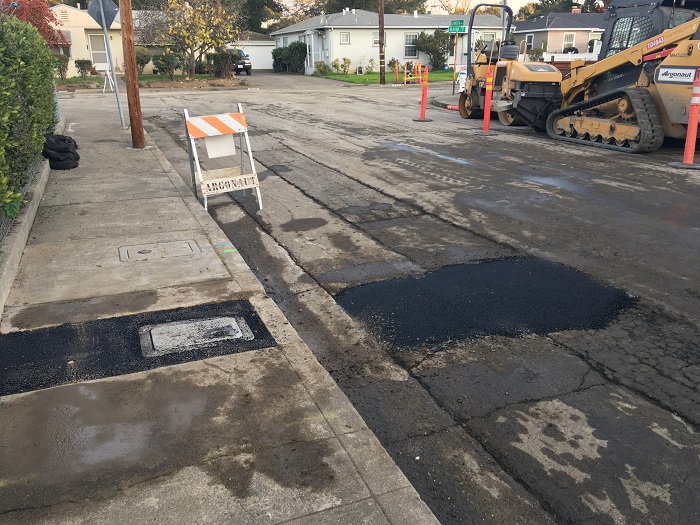
As many as 10 million homes in the U.S. receive water through lead service lines, exposing the people who live in those homes to lead in their drinking water. Lead can harm the brain, circulatory system, kidneys and other parts of the body, and is especially harmful to children, whose bodies are still developing. Children exposed to lead may have slower growth and development, suffer learning and behavior problems, and experience other harms. According to the American Academy of Pediatrics, there is no level of lead exposure that is safe for children.
Thankfully, the federal infrastructure bill passed by Congress in November includes billions of dollars to replace some of these lead service lines, which carry water from municipal water mains to individual homes. This will reduce health risks for children who get their water through these pipes – and delight construction-obsessed preschoolers who get to watch pipes being replaced. (I know this because when there’s construction equipment around, I get as excited as a four-year-old.)
The process of replacing all of those water lines, however, is a serious endeavor.
This winter, the city has been replacing the aging water and sewer mains and portions of the service lines to every house on my street. In the interest of documenting what the process of service line replacement looks like (and to indulge my inner four-year-old), I photographed the steps involved in replacing the service line to my house. Even with lots of heavy equipment, it’s a time-consuming and labor-intensive job that crews across the country will be replicating millions of times over in the next few years.
Well … not quite. The work at my house was slightly different from replacing a lead service line – the pipes on my street weren’t made of lead; they were just old. This means that the city replaced only the portion of each service line between the city’s water main and the private property line. If these had been lead pipes, they would have needed to be replaced all the way to the house. (Also, the city moved my water line a few feet away from the sewer line to meet modern engineering standards. I don’t know if that re-alignment would happen if this were solely a lead service line replacement project.)
Here are photos of some of the key steps as the crew replaced the publicly owned portion of the service line that runs from the water main beneath the street to the property line.
1. The crew laid out new parts next to the old water connection. The blue spray paint marks the location of the old water service line. The green paint marks the sewer line. They also marked the location of the gas line, in yellow, which is just out of the photo.
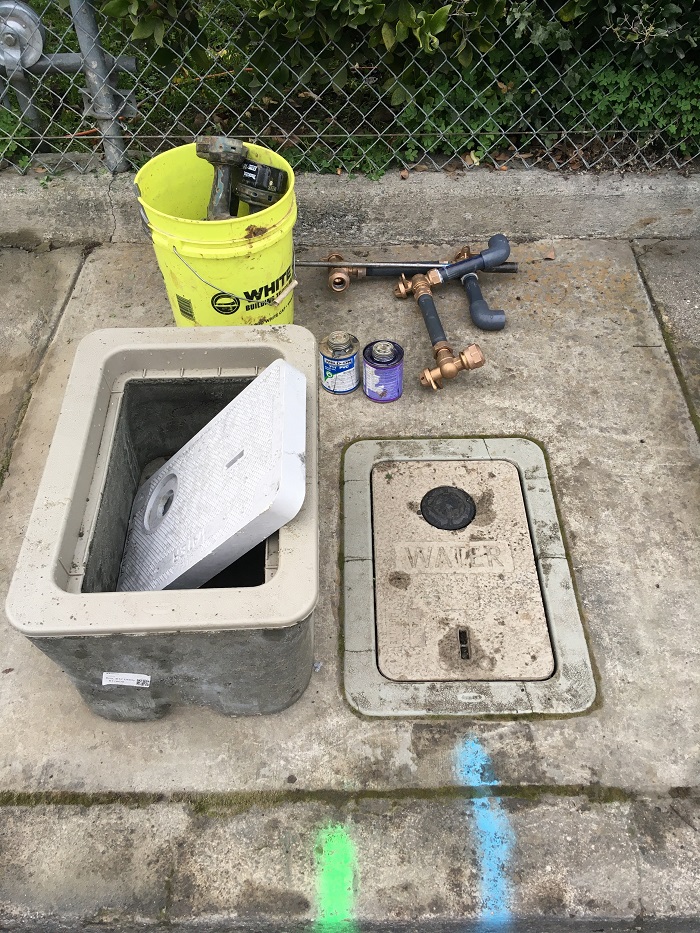
2. They used a jackhammer to loosen the asphalt in the street and a section of concrete on the sidewalk. This part of the process is irritatingly loud on days when I’m trying to work from home, and even worse for my neighbor who works nights and needs to sleep during the day.
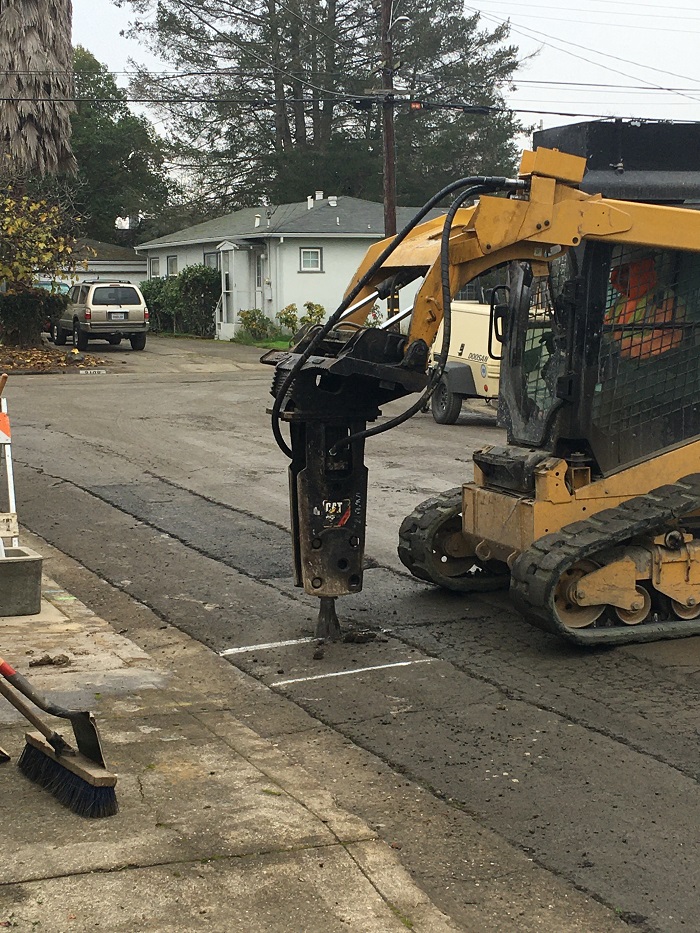
3. The crew used more heavy equipment to dig out the asphalt and concrete that wasn’t too close to the gas line. This part is especially good for preschoolers because it isn’t as loud as the jackhammer.
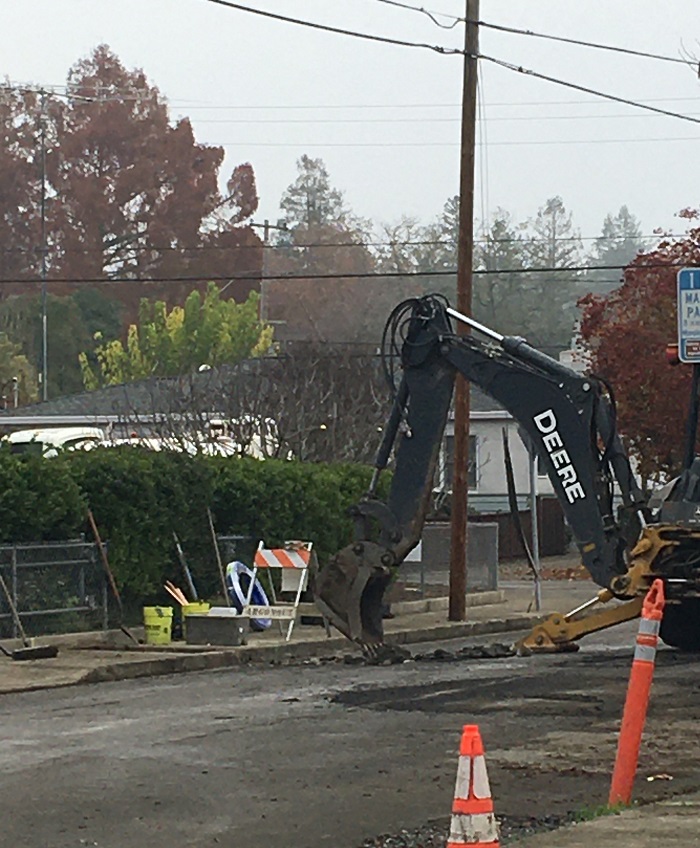
4. Despite the heavy equipment on site, much of the digging had to be done by hand to avoid breaking gas lines or the curb. (These workers were in front of my neighbor’s house.)
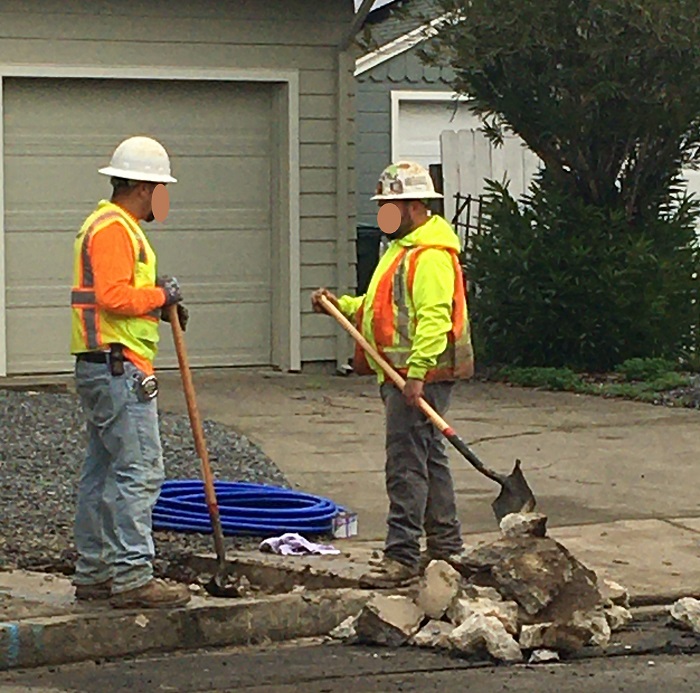
5. To access the water main, the hole needed to be excavated to about six feet below street level. You can see the very top of the white hard hat of the worker digging by hand next to the water main.
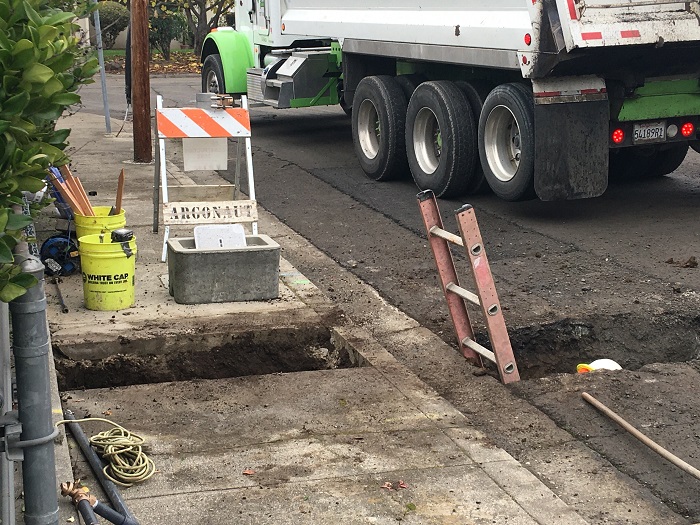
6. Here’s what the new water service line connection looked like from my vantage point on the curb. The light blue pipe is the water main. The cobalt blue hose is the new service line. The yellow hose is connected to a sump pump to keep the hole from flooding during construction.*
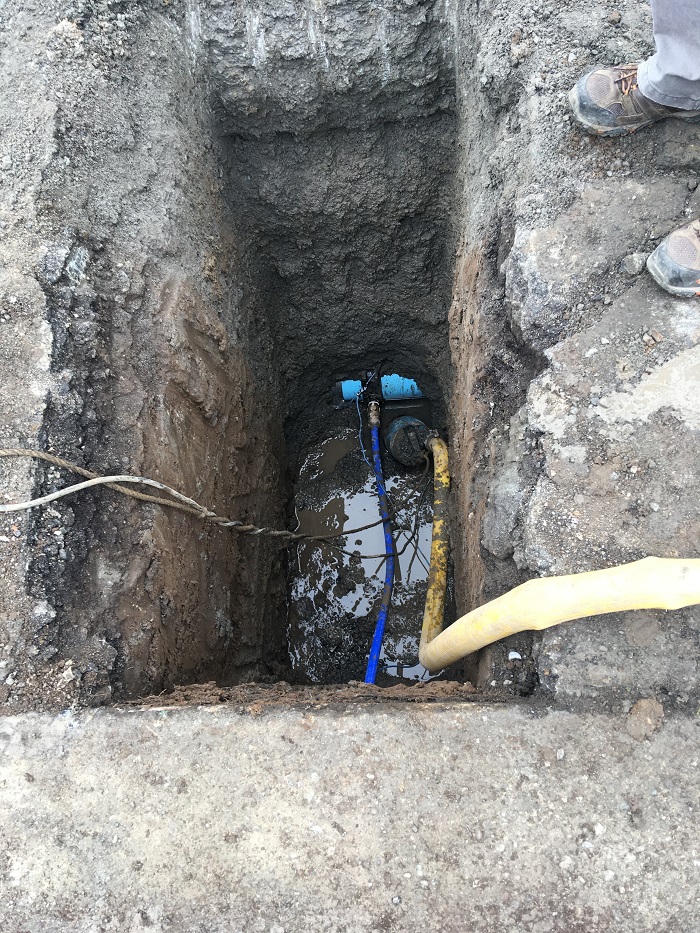
7. This is the connection at the sidewalk. You can see the bright blue service line hose crossing beneath the curb and connecting to the gray water pipe that goes to the house. If my house had had a lead service pipe, the replacement water pipe would need to be run all the way from this junction to my house. (If you want to see what that might involve, check out this video from Pittsburgh.)
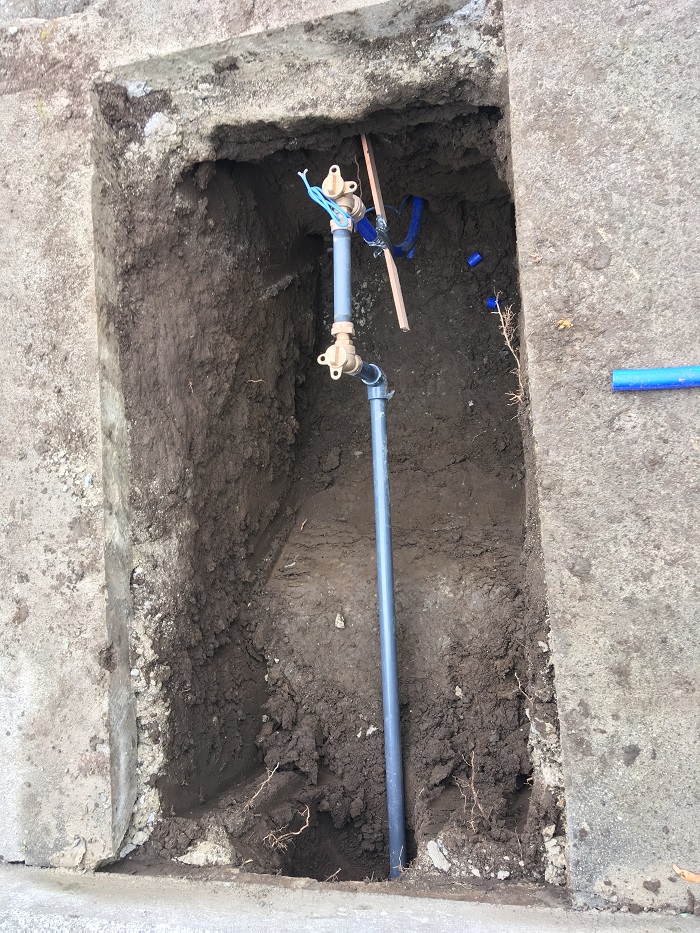
8. Once the new service line was connected, the city patched the street and sidewalk with asphalt. After all the houses up and down the street have new service lines and new sewer connections, the asphalt in the sidewalk will be replaced with concrete and the entire street will be fully repaved.
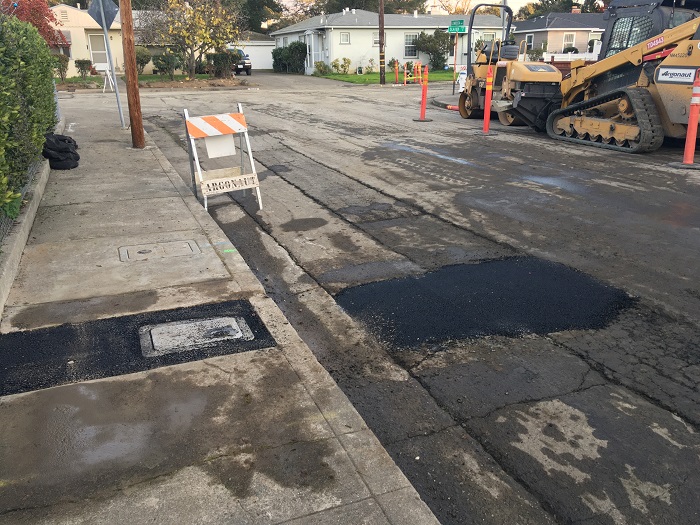
The four-year-old in me will be sad to see the construction equipment gone from the neighborhood, but as an adult I’ll be happy to have the ruckus end and to have new infrastructure in place to deliver clean water to my house. Though the construction process to replace millions of lead service lines will be highly disruptive for neighborhoods across the country, the end result of lead-free drinking water will be worth it for the nation’s children.
*I admit it makes me uneasy that the water main and the new service line are both made of plastic. The main is PVC and the service line hose is HDPE. Both meet current standards for pipes delivering drinking water. But, as scientific knowledge of the health impacts of plastics keeps expanding, we keep discovering new bad things about plastic. Twenty years from now, will there be some new revelation about chemical exposures from these kinds of plastics?
Topics
Authors
Elizabeth Ridlington
Associate Director and Senior Policy Analyst, Frontier Group
Elizabeth Ridlington is associate director and senior policy analyst with Frontier Group. She focuses primarily on global warming, toxics, health care and clean vehicles, and has written dozens of reports on these and other subjects. Elizabeth graduated with honors from Harvard with a degree in government. She joined Frontier Group in 2002. She lives in Northern California with her son.
Find Out More
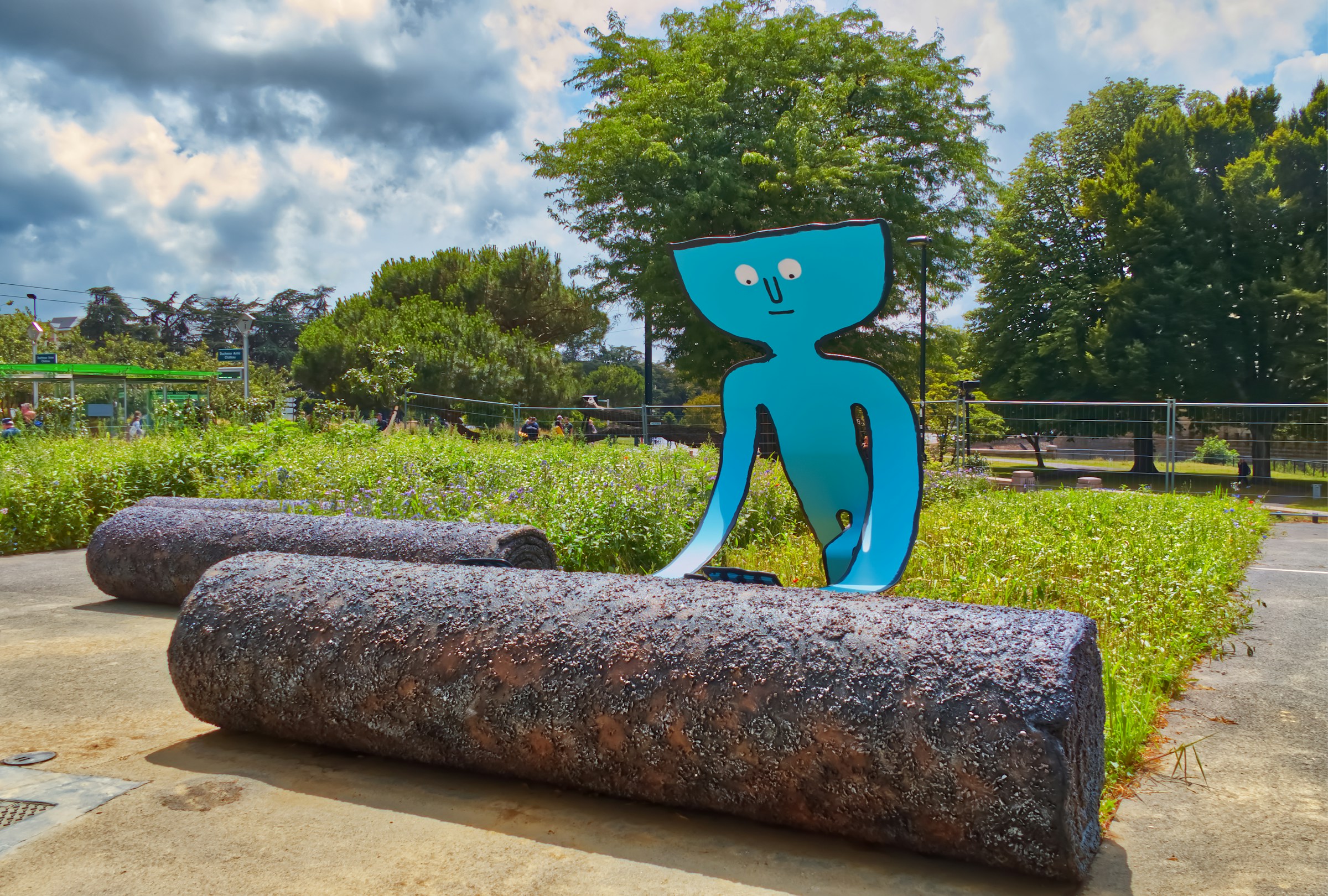
From gray to green: How (and why) to depave

A look back at what our unique network accomplished in 2023
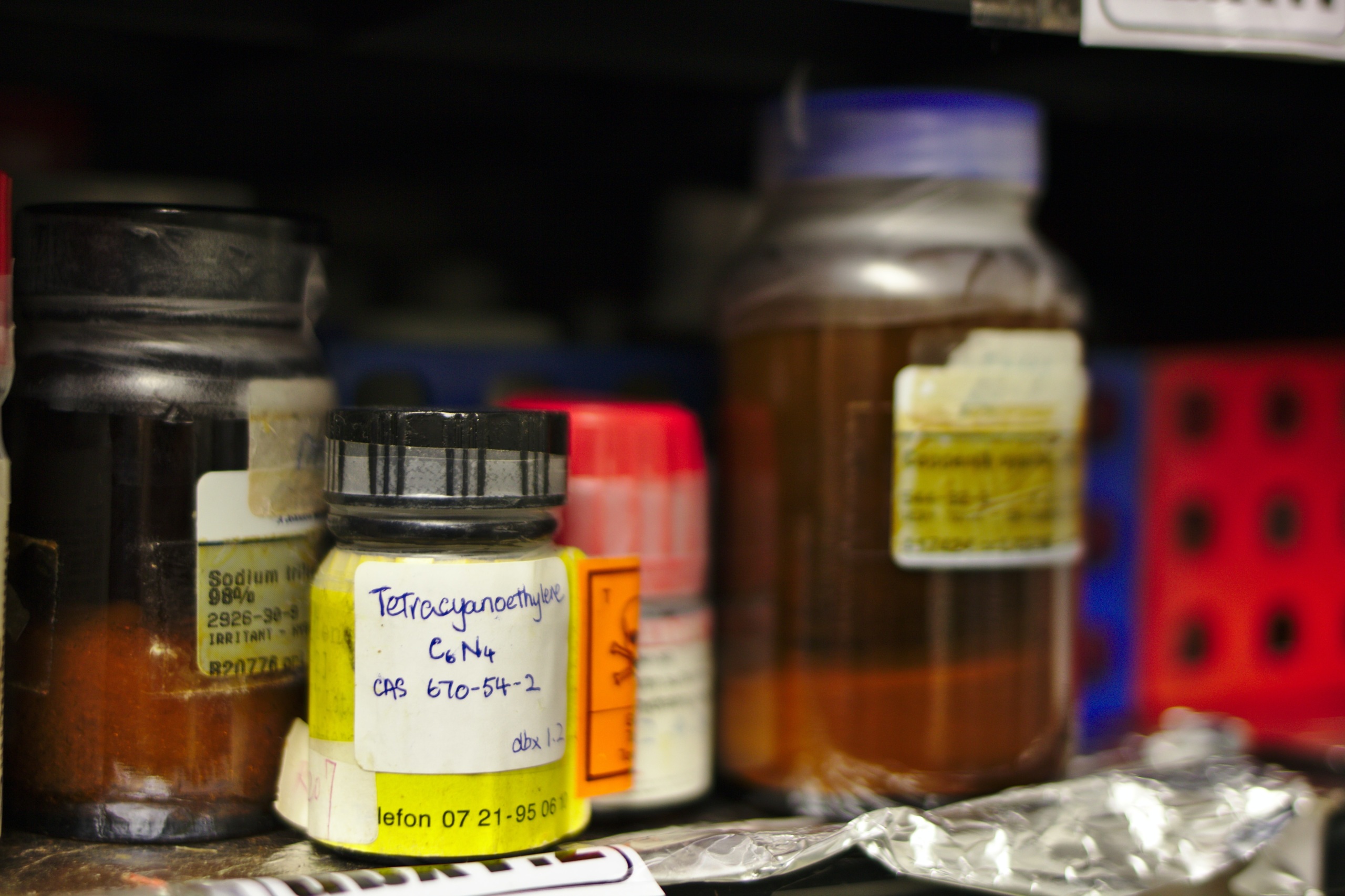
More and better testing would protect us from chemical threats

